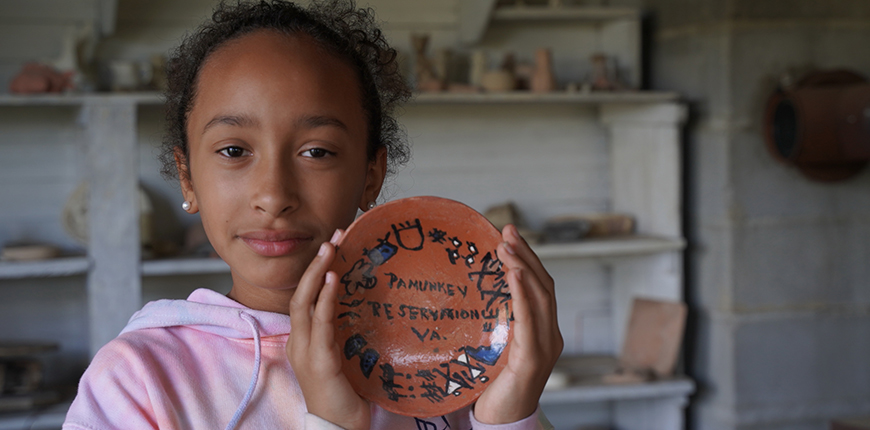
The Pamunkey Indian Tribe Cultural Resource Department strives to ensure the protection, preservation, enhancement and promotion of the Tribe’s history, traditions and culture.
The Pamunkey Indian Tribe Cultural Resource Department was established in February 2020 with the hiring of the Cultural Resource Director. Prior to this, the various roles managed by the Cultural Resource Department were handled primarily by the Tribal Resource Center with the exception of the Pamunkey Indian Museum & Cultural Center.
The Cultural Resource Department oversees management, policies, procedures and guidelines for the following core areas:
Cultural Education and Activities
Cultural education and activities are the primary focus of the Cultural Resource Department and are wide-ranging in their implementation and activities. The Department creates a rolling calendar of events, which outlines the various cultural classes and activities planned. Cultural classes and activities are diverse and can include history classes, pottery classes, a trip to a museum, a gathering and dinner provided for Tribal Citizens by the Department and fish fry dates. One of the priorities of the Department is to ensure that traditional knowledge is recorded for the benefit of future generations. To accomplish this, the Cultural Resource Department documents the cultural classes that occur and records other individuals who wish to pass on their knowledge. The Department conducts these recordings only with the full consent of the individuals involved. Traditional knowledge comes in many ways, shapes and forms and includes stories, songs, folklore, plant usage, pottery skills, cultural landscapes and history. The Cultural Resource Department believes it is essential to document this knowledge while still available and to record it whenever possible. The Cultural Resource Department also consults with other agencies, such as schools and universities to ensure that they accurately portray Tribal history in their classes.
Pamunkey Indian Museum and Cultural Center
The Cultural Resource Director is also the Museum Director and handles the day-to-day operations of the museum. Additionally, the Museum Director is responsible for developing policies and procedures for the museum.
Pottery School
By the 1930s, during the Great Depression, most Pamunkey Indians were dependent on non-salaried labor that included fishing, hunting, and farming. The Commonwealth of Virginia intervened in 1932 under the direction of Dr. B. N. VanOot, supervisor of Trade and Industrial Education on the Virginia State Board of Education. Dr. VanOot proposed the establishment of a state-funded pottery school to be located on the Reservation. The pottery school would aid Pamunkey residents in generating revenue internally for its people through a tourist-based market driven by pottery production.
School House
In 1870, Virginia created a free, statewide public school system. However, this excluded many of Virginia’s Tribes. According to a Tribal Ledger Book, the Pamunkey Indian School House was established on May 22, 1909 as a one-room schoolhouse. Before 1909, Pamunkey children attended school in a log cabin that was located at the entrance of the Reservation. The school served student from 1st through 7th grade. If students wished to continue schooling beyond 7th grade, they were forced to attend a Bureau of Indian Affairs (BIA) boarding school, including Bacone College in Oklahoma, Haskell Institute in Kansas or Cherokee High School in North Carolina. In 1948, the Pamunkey School was closed due to low attendance and the remaining children were transferred to the Mattaponi Reservation School.
Vision Statement
To perpetuate Pamunkey Indian Tribe heritage through sharing knowledge of the Tribe’s history and culture for present and future generations through access, education, service, and stewardship.

